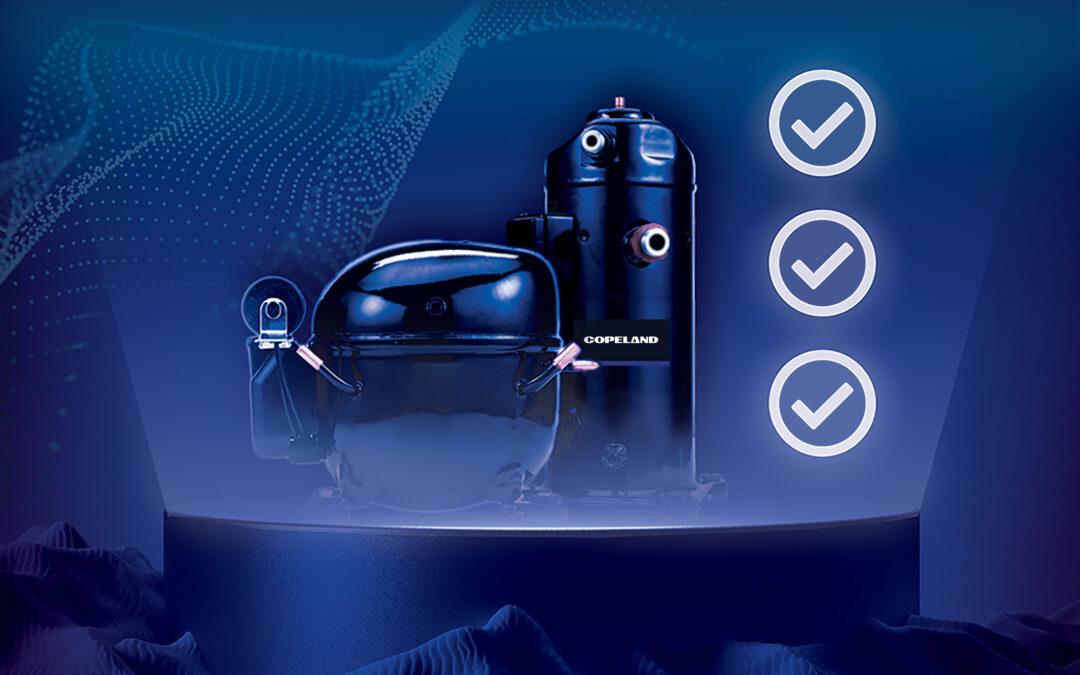*On June 1, 2023 Emerson’s Climate Technologies business became a new standalone company – Copeland. Though our name has changed, we are building on more than a century of HVACR innovation and industry leadership, and Copeland continues to offer the same products, industry stewardship, and learning opportunities you’ve grown to trust. Information found on this webpage posted before June 1, 2023 may contain our old name or branding, but you can be at ease knowing it was created with the knowledge and expertise of Copeland.
This blog summarizes an article posted in RSES Journal, entitled “Mapping the Refrigerant Regulation Landscape.” Click here to read the article in its entirety.

Waters continue to rage in the current refrigerant regulatory landscape — and the tide doesn’t seem to be letting up. Starting with the Environmental Protection Agency’s (EPA) introduction of the Significant New Alternatives Policy (SNAP) Rule 20 in 2015, working up to a plethora of plot twists in the latter half of 2017 and now into 2018, much of the industry has been caught off guard and making on-the-spot adjustments to their operations. Here’s a breakdown of some of the more prominent developments.
DC Circuit Court vacates SNAP Rule 20
The U.S. Court of Appeals for the DC Circuit decided that the EPA had exceeded its authority to require the replacement of HFCs under the Clean Air Act, Section 612. This ruling elicited a number of different responses, including several parties filing petitions for a rehearing en banc of the case, but the court announced that it would deny the intervenor/respondents’ petitions for a rehearing.
More recently, a group of bipartisan senators introduced a bill called the American Innovation and Manufacturing Act. If it’s passed, it would entitle the EPA to phase down HFCs used in refrigeration and air conditioning in consultation with the industry, operating in accordance with guidelines set by the 2015 Kigali Amendment to the Montreal Protocol, which the U.S. has yet to ratify.
The DC Circuit Court of Appeals ruling to vacate Rule 20 as initially enacted does not necessarily signify the end of the EPA SNAP nor represent the global/state legislative efforts yet underway to reduce greenhouse gases. In fact, there are some promising initiatives taking shape.
California Air Resources Board (CARB) plans big phase-downs
CARB’s initial proposal to preserve the federal framework in new retail food refrigeration, food dispensing equipment, air-conditioning chillers and refrigeration vending machines will take effect in 2019. CARB’s second proposal plans to prohibit refrigerants with a GWP of 150 or greater in new stationary refrigeration systems containing 50 or more pounds of refrigerant beginning in 2021.
Canada ratifies Kigali amendment
This ruling, impacting stand-alone refrigeration, centralized refrigeration and chillers, enacts a significant HFC phase-down schedule that will take place over the next few decades. Canada was among the first countries to ratify the Kigali amendment.
E.U. pushes for lower F-gas emissions
The E.U. enacted regulation to control fluorinated greenhouse gas (F-gas) emissions, including HFCs, in 2015; it has yet to stop. The next step of its phase-down schedule, set to take place later this year, will lower the consumption quota from the previous 93 percent of the original baseline to 63 percent.
Energy mandates also play a big role
Energy mandates by the Department of Energy (DOE) are also causing turmoil within the industry, specifically impacting three classes of equipment: commercial refrigeration equipment (CRE), automatic commercial ice makers (ACIM), and walk-in coolers and freezers (WICF). CRE have been subject to 2,086 percent energy reductions since March 2017, while ACIM must achieve 525 percent energy reductions; WICF must reach 3,037 percent reductions by 2020.
Opportunity for collaboration
Recent EPA rulings and DOE mandates have been set in place during different time frames, causing headaches for equipment manufacturers and end users alike. Recent regulatory developments present an opportunity to push for coordination and collaboration among all parties to create a more cohesive transition.

Electrical component considerations for A2L system safety
Electrical component considerations for A2L system safety As a new refrigerant category in the...

A2L refrigerant regulation updates: what you need to know today
Preparing for the approval and safe use of A2Ls in commercial refrigeration applications The move...

Address Efficiency Mandates with Compression Technologies
Strategies for complying with DOE and ENERGY STAR® in self-contained and remote condensing units...
